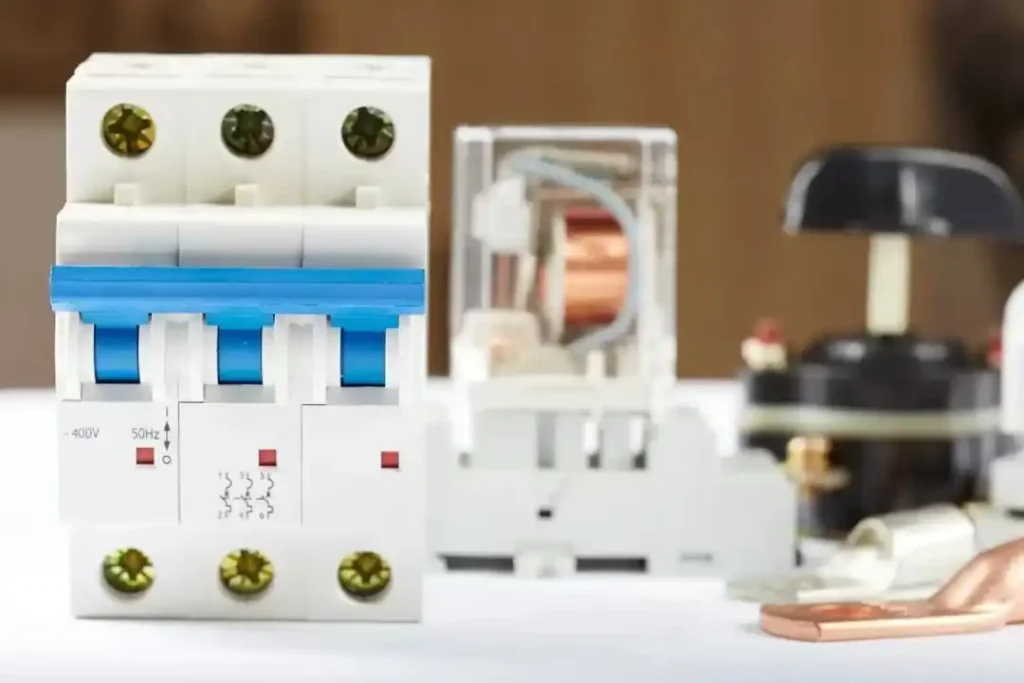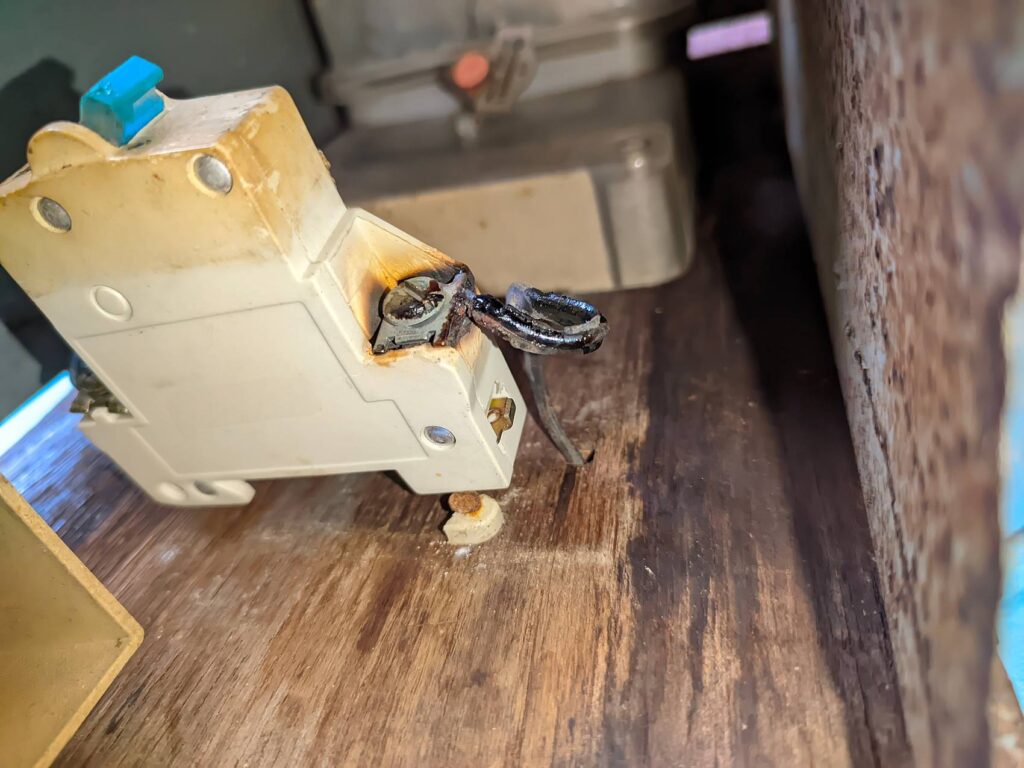Definition of Three pole Circuit Breaker
A three pole circuit breaker (3P circuit breaker) is a switching apparatus that can control three-phase circuits simultaneously. Its most significant feature is that it contains three independent contacts, corresponding to three phase lines (L1, L2, L3) in three-phase AC power.
When the circuit is overloaded, short-circuited, or subjected to abnormal current, it will cut off the three-phase power supply instantly to safeguard equipment and personnel.
Main features:
Pole design: Three contacts independently control three-phase circuits, which can be used in three-phase power supply systems of 380V and above.
Application scenarios: Widely applied in industrial motors, transformers, large equipment, and three-phase distribution networks
Symbol identification: represented by “QF” in electric diagrams, except for single or double pole circuit breakers
The core function of a three pole circuit breaker
Overload protection
When the circuit current exceeds the rated value, the three pole circuit breaker senses temperature changes through a thermal release (bimetallic strip), delays the circuit to cut off, and avoids wire overheating or equipment damage
Short circuit protection
When a short circuit fault occurs, the electromagnetic release instantaneously separates the contacts through magnetic field force, cuts off the circuit, and the response time can reach milliseconds, preventing the arc from burning out the equipment

Circuit isolation and maintenance safety
A three pole circuit breaker has a physical isolation function, which completely disconnects the three-phase power supply during maintenance to avoid the risk of electric shock. Some models are also equipped with mechanical locking devices to ensure operational safety
Three phase load balancing protection
By synchronously cutting off three-phase circuits, it prevents load imbalance caused by single-phase faults and protects equipment such as motors from voltage fluctuations
Technical parameters of 3-pole circuit breaker
Rated Voltage:Description: Applicable voltage levels, such as 380V, 660V, etc.
Rated Current:Description: The maximum continuous current that can be carried, needs to match the load requirement.
Short-Circuit Breaking Capacity:Description: The capacity to break the maximum short-circuit current, with higher requirements in industrial settings, such as 50kA
Arc Extinguishing Medium:Description: Common types include air, vacuum, SF6 gas, which affect breaking efficiency and lifespan.
Key points for selecting 3-pole circuit breakers
Load type: D-type circuit breakers (with high short-term withstand current) should be selected for high starting current equipment such as electric motors
Environmental adaptation: In the case of high temperature and humid conditions, models with high protection levels (e.g., IP65) should be given priority
System compatibility: Should be compatible with the grid frequency (50Hz/60Hz) and wiring system (e.g., three-phase three wire system)
For example, this 3-pole circuit breaker is compatible with 50 ampere switching circuits
Application scenarios
Industrial use: protect three-phase motors, frequency converters, and manufacturing line units against short circuit and overload malfunction
Power system: used for control of lines and fault isolation on distribution networks and substations for rapid restoration of power supply
Commercial skyscrapers: provision of protection of safe use for three-phase supply equipment such as air conditioning systems and lifts
Renewable energy: Overcurrent protection for wind power generation systems and photovoltaic inverters





